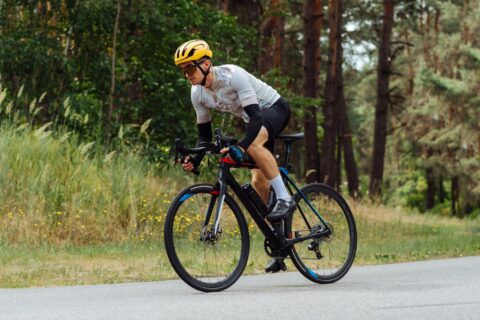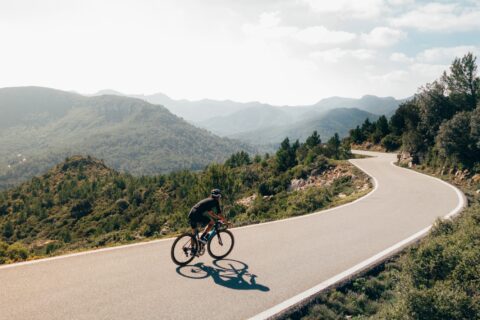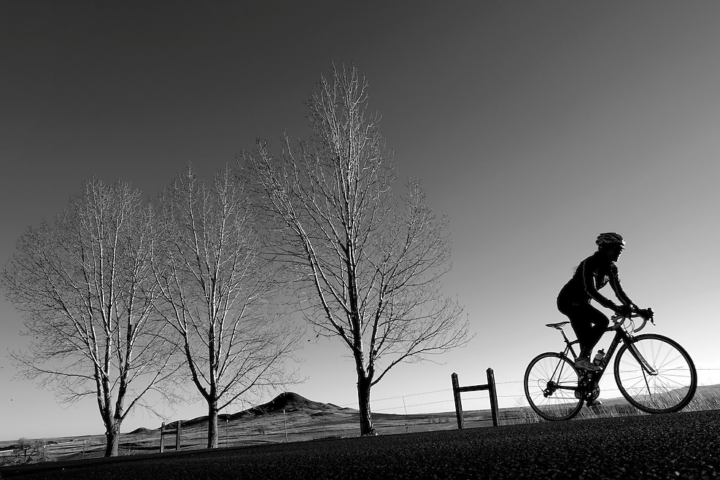We discuss the nuances of base season planning, from the appropriate intensity distribution to the time it takes to produce gains from both aerobic and anaerobic work, and much more.
Video Transcript
Chris Case 00:17
Welcome to Fast Talk Laboratories, your source for the science of endurance performance.
Trevor Connor 00:26
Welcome to another Coach’s Corner. I am here with Coach Ryan Kohler and Ryan, today we are talking about mapping out base weeks.
Ryan Kohler 00:35
Perfect.
Trevor Connor 00:36
It’s gonna be a fun one. Are we could argue this one, are we gonna be on the same page?
Ryan Kohler 00:41
I feel like we’ll be on a pretty similar page probably.
Trevor Connor 00:44
Dammit, I want a good argument. Let’s pick something next time that we can argue about.
Ryan Kohler 00:48
Okay.
What Is The Goal Of Base Season?
Trevor Connor 00:49
So before we go into how to map out your week, let’s talk just a little bit about the base season and what you’re trying to accomplish. And Ryan, I can cover what we agree on and hopefully have that fistfight at some point. So base season to me is the period of time to build your form, there was a traditional view that base season was when you did all that long, slow, you did no intensity, and then season you do intensity. There’s still some truth to that, but it has shifted towards more of a, you do a bit of intensity all year round, and you do a lot of lower intensity all year round as well. We’re big fans of that polarized approach, which is 80 to 90% of your time in that zone one on a three-zone model, and most of the rest of your time in that high-intensity zone three. And really the polarized model that’s kind of all year round. But Ryan, how do you feel?
Ryan Kohler 01:53
Yeah, I think we’re in good agreement. I mean, one of our previous Coaches’ Corners, we’ve talked about looking at heart rate and power data to get some insights from previous training blocks. So I know I’ve come from coaching a lot of indoor cycling over the winter, and have definitely fallen into the trap. not by choice, but, that’s just how it happened, where I did a lot of threshold work, and then being able to switch and not doing those classes. Also not doing as much Zwift racing, for example, and really prioritizing some of the lower intensity. I’ve definitely seen the benefits physiologically from mapping out that base and being a little bit more strict with how that base is approached. And what I found is it actually takes work. You don’t just fall into a good base period, you know, or a good base week, I feel like if you don’t think about it and map it out, you’re going to have more of a threshold approach. And you might go too hard.
Trevor Connor 02:54
Yep. And threshold that’s another common term when we talk about the threshold approach is that very sweet spot approach. So just to give you an example of what I mean, I’m going to take you to one of my athletes here. So this is distribution graphs and you can see I even called it Seiler weekly distribution. Because Dr. Stephen Seiler, who’s part of our platform here, he was the one who really coined this polarized concept, and talked about what the distributions are here. And you can see this is my athletes base season. And the blue is his zone one, the orangish is the zone two that sweet spot zone threshold zone, and then the maroon is that zone three, that high intensity, and I include threshold intervals personally in that high intensity range, which is what I have him doing right now. But you could see there’s a couple exceptions, but for the most part, that’s a pretty even distribution. If we go back to his last week, you can see it’s 83%, zone one 11%, zone three and about 5% zone two, and that’s pretty good. Now you do have to take it with a bit of grain of salt when you do graphs, because the graphs have no gradation, they just say you go over x wattage, and you’re now in zone two. So if he’s going out and doing an LSD ride, that’s a zone one ride hits a hill and has to go just a little over zone one, it’s going to be adding to that yellow. So when we say polarized is 85 ish percent, 80-85% zone one and on a graph like this, you come out a little below that. It’s just because of those little things that can add up a little bit. So give yourself some room. Dr. Seiler, actually, when he did the research, because of that said, we’re actually going to take the intent of a ride. So if you go and do an interval workout, that’s zone three workout, you go and do a long, slow ride that’s zone one workout. We’re just going to count the whole workout towards one zone.
What Type Of Work Should You Do During Base Season?
Trevor Connor 05:01
So, if I showed you his summer, when he was in a season, the distribution really wouldn’t look that different. So the difference to me is the type of work you’re doing. And Ryan, please pipe in here. But when I try to figure out what is the type of intensity work that zone three work I want an athlete doing in the base season versus in the peak of the season, I’m going to factor in two things. One is, in the base season, I want to be a little more aeroboically focused, there’s no reason to have a big anaerobic engine in the middle of January when you’re not racing. I’m also going to look at the type of work that takes longer to produce gains. And lo and behold, aerobic work tends to take longer before you see the gains. Anaerobic work is much quicker. So for example, study on sprint workouts, it takes about two weeks to see bulk of the gains, when you’re doing something like tabatas, higher intensity intervals, they’ve shown it takes about six to eight, not weeks, but workouts to see most of the gains when you’re talking about threshold intervals. So we’ve talked a lot about four-by-eight-minute intervals, takes about 10 to 14 weeks to see the gains. So I’m going to favor that work in the base season, because that’s when you have the time, have 10 to 14 weeks to do that work. But Ryan, what’s your thought?
Ryan Kohler 06:25
Yeah, well not disagreeing with you yet. So boxing gloves are still off, right? But I agree with that. I think when I look at the intensity in the bass season, I look at it from what’s going to increase enjoyment, and just help that person stay motivated. And in particular, I have worked with a lot of masters athletes over the years, and there’s one I’m currently coaching that really needs some of that intensity. So we’ll look at it different ways of sometimes it might be a zone five, or a VO2 type of workout, other times it might be a shorter on-off tabata style workout. And, other times it might be more of a neuromuscular, sprint-type effort. So yeah, if I’m putting in intensity during that base, in general, I’ll keep that very high intensity we don’t need as much of it to get the response, it’s a lot more spaced out. It’ll look totally different in January with VO2 session versus what we might see in June or July, where the frequency is severely decreased. And it’s more just, hey, this is fun, have a good workout with this, enjoy it, go push yourself. And yeah, maybe we’ll get a PR out of it somewhere, or you’ll see some changes. But we’re really not expecting any benefit from that other than, hey, have some fun, and just maintain that top end. But yeah, then the other sub threshold is definitely in agreement with that, where that’s the focus where we want to push that and give it the time to really develop a solid base.
Trevor Connor 08:04
Another important thing about that interval work, that’s gonna really factor into how to map out the base season, and I’m sure we’ll do a follow-up where we talk about how to map out the season. If you go and do a really high intensity interval, so a good set of tabatas, a good set of sprints- not just a set, but multiple sets, so a full workout,- you get on the bike the next day, and your legs aren’t gonna want to break 100 Watts, those workouts rip you apart. Threshold workouts, you can do a good threshold workout, get on the bike the next day and go I’m kind of feeling that but still do a decent ride. So in season when I have athletes, I say Okay, it’s time now to bring in some sprint work for a couple of weeks. Or it’s time now to do some good tabatas or one minute intervals. It’s really a kind of one to one ratio of go do something really hard that beats you up, and then the next day is a rest day. And then maybe the day after that is an easy ride. That’s not necessarily what you have to do on the base. As a matter of fact it’s really hard with proper base training to have a single day- or I don’t think you really should, that frequently have a single day where you go,- I’m destroyed for that day. So remember, the fundamental principle of training, which is you want to produce an overload, you want to stress yourself fatigue yourself, and then you want to rest and let the body rebuilt.
Mapping Out A Week In Base Season
Trevor Connor 09:31
So you do that over cycles. So you can talk about your mezzo cycles where you’re doing that over several weeks, you build to a fatiguing week and then you recover. But you can also think about that in really short term. It’s not a bad way to map out the week. So I’ve got some examples here of ways to do that in the base season. So here’s two, I drew these out and just to give you kind of an understanding of how this all works, I have TSS and have to give credit to training peaks and Dr. Coggan who came up with the training stress score, which is a measure of overall how much stress you did your body. It’s not saying whether it was from intensity or volume, just saying overall, here’s how much stress you did to your body on that ride. So I have a red line showing the stress over the course of the week. And then here’s your different workouts, and the taller it is the longer so that’s representing volume. So let’s start here, this is what you might see more of a pro who can train whenever they want, do over the course of the week, and in the base, like I said, no one workout is going to get enough fatigue to say, let’s recover. So I like to do two or three-day blocks, you don’t have to think about a week just think, I am going to do a two day block, rest for a little bit, I’m gonna do a three day block rest for a little bit. So you can see that right here. Here’s a three day block, I like to start with quality and go to intensity. So actually, I have an easy ride here, so the N stands for Neuro work. So in the base season I like to do neuro work, that’s not hard. That’s things like just do some cadence sprints or do some cadence pyramids, we have lots of examples on the website. So that first day is just getting your legs primed. Next day is the threshold work, which will hurt the legs a little bit, it’s not a long workout. And then now that your legs are a little beat up, let’s go out and do a good four or five hour ride. By the end of that three day block, you might be a little tired. So you go next day, either take the day fully off, or just go do a really easy spin, and then do another block. So here’s two hours of another threshold workout, and then another four to five hour good ride. So again, that’ll generate some fatigue. And if you saw the Monday here, you’d probably take Monday off. So you can see there’s the built in the TSS, recover, building TSS, again. Most of us can’t go out on a Thursday and do a five hour ride. So what I will give to athletes who have to work or myself, I’ll tend to do the intensity during the week. So here’s a tuesday-thursday block with the two threshold workouts. Then maybe just do some neuro work on the Friday to just try to get the legs back a little bit and then have a good hard weekend with some more volume, not intensity but just get to long rides to generate that stress. An alternative to that is maybe do some thresholds on Tuesday. All of us want to have a little bit of fun, maybe a Wednesday you go and jump into a Zwift ride. Then have Thursday be off ,Friday be easy and then do your next threshold session on Saturday and a good long ride on Sunday. So it’s again, kind of building those blocks. Ryan, any thoughts on all this?
Ryan Kohler 12:53
Well, I see. One of the questions, of course for the base season and I see it in the notes here is weights.
When Is It Appropriate To Use Weights?
Trevor Connor 12:59
Yeah, let’s talk about weights. And then we’ll go into this very particular fatigue week and recovery week. Here’s my take on it. Maybe this is where we throw the boxing gloves on finally. First of all, weights are not a recovery day. You don’t look at this and go okay, Friday is meant to be a day to recover, so I can do my weekend block. So I’ll do weights here. That’s the exact wrong way to think about it, it takes your body about 48 hours to recover from a weight session. For all except the hardest work rides, it only takes about 24 ish hours to fully recover from a ride on the bike. So weights are actually the exact opposite of recovery day. So I like to personally have quality days be really high quality, meaning if you look at this base flexible plan here, I would probably do my weights on the Wednesday and the Saturday on the same day that I’m doing my intervals.
Ryan Kohler 14:04
Just finish yourself off before that endurance ride?
Trevor Connor 14:07
Yep and then go and suffer through the endurance ride now the base season, I’m actually going to argue weights tend to be a little more important than the ride. So in the base, I might think about I do my weights in the morning, do the threshold workout in the evening. Not gonna feel as good on that threshold workout, but I’m okay with that. What’s your thought?
Ryan Kohler 14:28
That’s why we have a threshold range, right?
Trevor Connor 14:30
Yep, exactly
Ryan Kohler 14:31
Yeah, I mean I fully believe in them. I think we need them in there. And that base time is a great time to do it. The base flexible option that we’re looking at, yeah, if you have that time, and you can have like an am and a pm session. Definitely maximize the time if you’re under load, build the load, right? The nine to five. I know that one speaks to me a lot. And that’s where I think it gets a little bit tricky where we just don’t have the time and the tendences to say, Oh, well, you know, Monday or Wednesday, those are off days. So I’ll just do some weights there. But yeah, then we get into this always sort of tired, never fully recovered mode. So it’s a little bit trickier. And yeah, early in the season, I might prioritize weights a little bit more in the base phase. And then expecting that, okay, if this athlete hasn’t been lifting much lately, they’re going to be sore, it’s going to take their body a week, two weeks to really start adapting to those new movements. And then what we can do is figure out, so at that point, those first couple of weeks, I wouldn’t have them do much in terms of intervals, I might just tell them to go more of like a Farlek style, hey, if you’re doing weights during the week, let’s just keep it pretty easy. On the weekends, if you’re feeling better, you have a three or four hour ride on Saturday, maybe, okay, if you feel good, let’s do some sprints, let’s do some intervals there have some fun with that. And then as they start to adapt to the weight training, that’s when I would suggest alright, now let’s start to prioritize things a little bit more, and say, yeah, we’ll start to shift toward, eventually, maybe the cycling becomes a priority. And then it’s an issue of okay, do we do the cycling first or the weights and where do we put them? So in the base season, I’m fine actually taking away cycling days to get some of the strength in there. And hopefully, we get a good base period where this athlete can enjoy some increases in strength, they can increase that neuromuscular recruitment, they can enjoy that stuff, and then bring that to their bike training. So then maybe by the spring, and then we start getting toward the summer. Well, now we don’t prioritize the strength as much, it’s more maintenance. And that’s where we start to prioritize the bikes.
Trevor Connor 16:36
And that’s where I would get the workout on the bike to maximize quality, and then think about doing some strength afterwards. Obviously, as Ryan was saying, sometimes it’s tough. There’s the ideal, but then there’s what life allows. So what I tell my athletes is the one rule when trying to figure out when to do weights. So let’s say this is your week here, I would not do weights on Wednesday, I would not do weights on Monday, because you have thresholds the next day or interval session the next day. And there’s kind of a delay effect of when you really feel that damage from the weights. And it tends to be kind of that next day that you feel it. So you can do weights in the morning and still get away with doing intervals in that evening or afternoon. You’re going to have a real hard time the next day.
Ryan Kohler 17:23
Yeah, and I think one other thing for thinking about base and endurance athletes with weights, is, there still seems to be this tendency toward weight training sessions being like an hour long, maybe longer, where you’re going to the gym, you’re spending an hour plus there, it doesn’t have to be like that. It can be, you know, I’ve worked with in particular masters athletes, wher they want to be on the bike. And they have that training background, that’s what they like doing. And we’re figuring out well, how do we use strength training and weight training to help? Then what we’ve done is inserted it a little bit more frequently at certain times of the year. But we’ve kept those sessions to 15-20 minutes at times. Very, very minimal. Just because that’s thing, if we’re looking for an overload, well, we can get an overload with one set of a few different exercises, and then we’re good. So really narrowing that timeframe down is helpful, too.
Trevor Connor 18:17
They did a great study where they had athletes go- or I think it was actually just regular people- go into the weight room, and one group -I forget what I think of it, but leg extensions, or maybe was bicep curls, I can’t remember now.- But they had one group would just do a single set, the other group would do six sets of the exercise. Otherwise, it was the same number of days per week for the same length of time. And then they looked at the difference in strength gains. And yes, the group that did six sets saw greater strength gains, but the group that only did one set, saw 80% of the strength gains of the other group. So you can go into the weight room, as Ryan said, do 15-20 minutes, just do one set of your exercises, and you’re gonna see 80% of the gains.
Ryan Kohler 19:07
Yeah. And which may be more than what we would get otherwise by trying to do too much and then over fatiguing ourselves.
Trevor Connor 19:15
So they’re there, you get into that cost-benefit ratio. So you did one set, you got 80% of the gains. Well, you go I want to really maximize my workout, I’m gonna do three sets, get an extra 10% gain, but then it’s much longer before you can get on the bike and do anything with quality. So you lose 15% from all the lost cycling time, you’re actually at a net loss. So you always have to factor everything in together more is not always better. One thing I’ll show you, that’s my bias. Not everybody follows this but I’m a big believer in Monday should always be a full rest day. Particularly as you get into the race season, you really beat yourself up on the weekend. So you tend to want to just recover on Monday. I’m a big believer and just get in that mind year-round.
What Is A Fatigue Week?
Trevor Connor 20:02
So the last two things we’ll cover here are the fatigue week, which is something that I love to have in the base season. Not everybody does this, I love to use this technique. And this is every 4,5, 6 weeks, you have a week where you really push the fatigue. And then as you can see right below that I have recovery week, because you follow it up with a recovery week. These go together, you can’t do one without the other. So now this is not a pro-fatigue weak, if this was a pro-fatigue week, you would see six hours, six hours, six hours, six hours, six hours, six hours, it would be very big. So this is how to produce the same sort of thing when you have a job and other factors going on. So this is one example what I really want is a good four days where you’re pushing through some fatigue, if you can. So let’s start at the beginning. If you’re starting out on a Thursday, I might have athletes do a reduced set of threshold intervals on the Tuesday, But I want them to be fresh for the Thursday. Thursday if you’re doing any sort of testing. So let’s say you’re doing an inside test or a 40 P-test or just want to do your 20 minute time trial, this Thursday is the day to do it the first day of the camp, see where your numbers are at, test yourself. Then, because you have less time Friday, while you still have some legs left is when I might have you do some sort of threshold work. This is where I go not expecting quality. This is also where you break the rules, this isn’t going to be fully polarized. But I basically just want you to go and do something hard and a workout I love to give my athletes which Dr. Seiler actually came up with on that Friday as you get on Zwift or whatever platform, and it repeats but it takes 30 minutes to do a repeat. So you do 25 minutes, right at that top of zone one right around your aerobic threshold, then you do five minutes at about 95% of threshold, then 25 minutes again at that aerobic threshold, and you repeat that 3,4,5, or 6 times depending on your level. And that is a killer workout. I love giving that during camps because you never go, that was really high intensity, you just start getting to that second hour, the end of that second hour, and go wow this is destroying me.
Ryan Kohler 22:33
It slowly wears you down from this. Yep.
Trevor Connor 22:36
And then the weekend is just to get some big volume. And the nice thing about these fatigue weeks even if you have a family and a job If you talk to your significant other and say I want to do this every six weeks, I want one weekend where I can go and beat myself up. They tend to be fairly supportive. And you have your one weekend to go and pretend you’re a pro cyclist and just enjoy going out and being on the bike for a long period of time. And by that final Sunday ride, usually you’re dragging the feet a little bit. And this is often where I’ll actually tell my athletes, throw in some hills, nothing structured, throw in some hills, try to hit him hard. And just make sure you come home for that ride saying yeah I’m done, no more.
Ryan Kohler 23:21
Put the bike away.
Trevor Connor 23:22
But notice after that, then you have a Recovery Week. So here it’s two days completely off the bike at the least Wednesday. I put in dots to say maybe ride but it’s one hour easy. Thursday, this is where I might throw in some neuromuscular work because neuromuscular work is really helpful to start to turn the legs around. And then notice up here I wrote only if you are ready, I think by Friday is the first time you might want to do a little intensity, throw in some threshold intervals. Then another easy ride there may be some volume on Sunday. This to me is actually ambitious. I have many times with athletes and they kill themselves up here in this fatigue week. And this whole week is nothing but rest and one hour easy rides. And I put that note out here. Let your body decide when you are ready. You can map out this week, this week is listening to your legs. And I have had recovery weeks where I am ready to go by Thursday and back to regular training by Friday. I have had recovery weeks even though the fatigue week was exactly the same, where this whole week was a write off. And even by the Monday or Tuesday of the following week, I’m still not 100%. The body decides you don’t. So there are some ideas on how to map out a base week if this is something you’d like to discuss with us or other members. As always go to our forum and that’s forums.fasttalklabs.com We’ll see you there.





